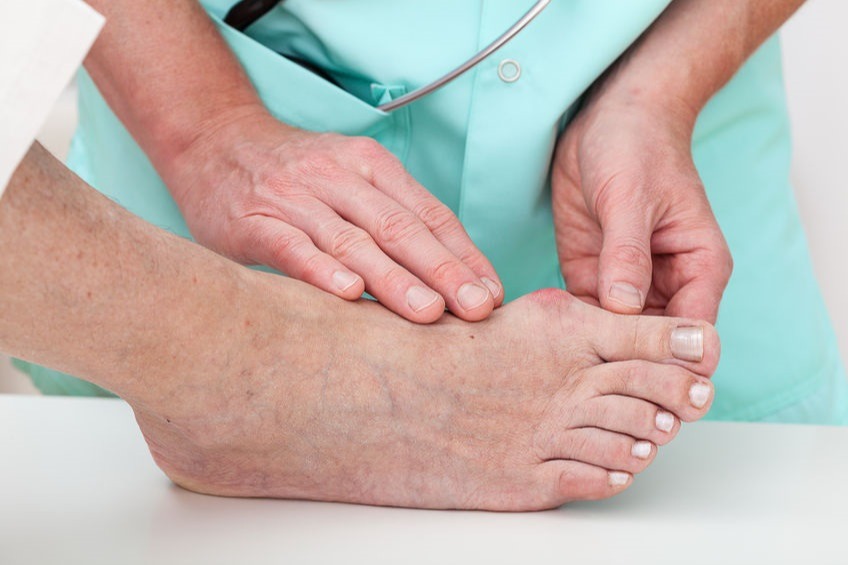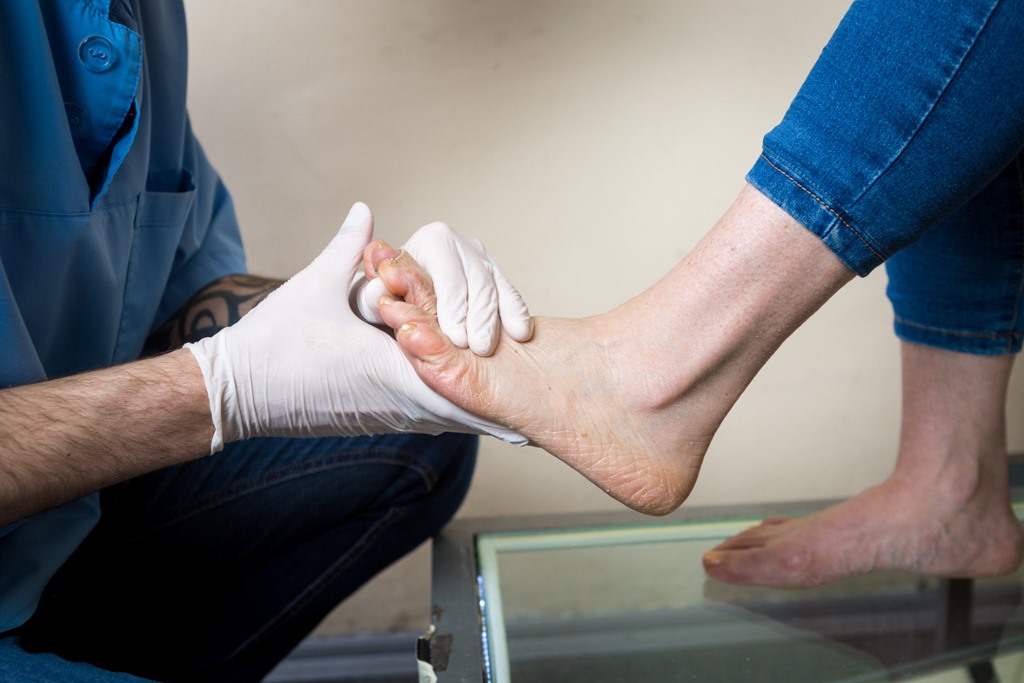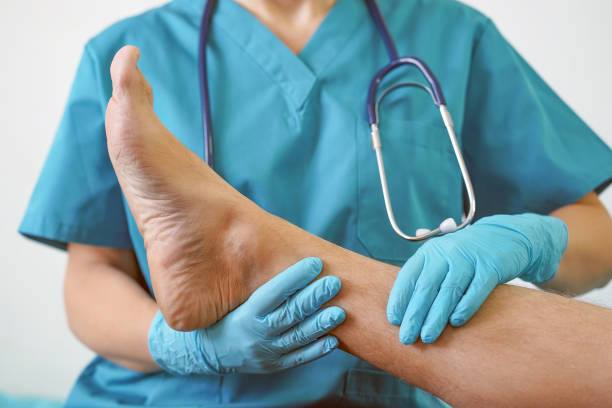Spreading Knowledge and Understanding About Bunions
Bunions are a common foot condition that affects millions of people worldwide. Many individuals suffer from the pain and discomfort caused by bunions, yet few are knowledgeable about this ailment. In this blog, we aim to spread knowledge and understanding about bunions, providing you with the facts and information you need to stay informed. From the causes and symptoms to the most effective treatments, we’ll cover everything you need to know about this often misunderstood condition. So, whether you’re seeking relief from bunions or simply looking to expand your knowledge, join us as we explore the world of bunions and discover the latest insights and breakthroughs in bunion treatment and care. Get ready to dive in and learn more about this common foot condition that affects so many people.
What Are Bunions?
Bunions are a common foot condition that affects millions of people worldwide. A bunion is a bony bump that develops at the base of the big toe, causing the toe joint to become inflamed and painful. Bunions are often caused by wearing tight, narrow shoes that squeeze the toes together, but can also be caused by genetic factors or underlying medical conditions. They can be very uncomfortable and can interfere with daily activities, making it difficult to walk, exercise or even wear shoes.
Bunions can be diagnosed by a podiatrist or a doctor who will examine your foot and take x-rays to determine the severity of the condition. Treatment options vary depending on the severity of the bunion, but may include wearing wider shoes, using orthotics, taking over-the-counter pain medication and in severe cases, surgery. It is important to seek medical attention if you suspect you may have a bunion, as early intervention can help prevent the condition from worsening.
Preventing bunions is easier than treating them. It is important to wear shoes that fit well and provide enough space for your toes to move freely. Avoid shoes with high heels or pointed toes, as these can cause pressure on the toes and lead to bunions. Maintaining a healthy weight and exercising regularly can also help prevent the development of bunions. By taking these preventative measures, you can reduce your risk of developing this painful foot condition and ensure your feet remain healthy and pain-free for years to come.

Bunion Treatment
Identifying the Different Types of Bunion
Bunions, often perceived as a simple foot condition, actually come in various forms, each impacting the feet differently. Let’s delve into the diverse types:
- Hallux Valgus (Bunion): The prevalent type involves a protruding bony bump at the big toe’s side, commonly triggered by snug footwear or high heels. By pushing the big toe towards the smaller ones, it forces the metatarsal bone outward. Though older women are more susceptible to Hallux Valgus due to years of high-heeled shoe use, men and younger adults may also experience this condition.
- Tailor’s Bunion (Bunionette): As opposed to Hallux Valgus, this type affects the little toe’s side. Its name originated from tailors, who often sat cross-legged, putting constant pressure on the feet’ outside edge, causing this bunion form.
- Acute Bunion: This type is characterized by sudden onset and severe pain in the bony bump. It may occur due to an injury or trauma to the foot, leading to inflammation and swelling in the affected area.
- Adolescent Bunion: Also known as a juvenile bunion, this type typically develops during puberty. It occurs when there is an abnormal growth of the foot’s big toe bone, leading to a misalignment of the joint.
- Genetic Bunion: In some cases, bunions may run in families, indicating a genetic predisposition to this condition. It is believed that certain foot structures and shapes inherited from parents may increase the risk of developing bunions.
- Rheumatoid Bunion: People with rheumatoid arthritis are more prone to developing bunions due to joint inflammation and deformity in the feet caused by the disease.
It’s essential to identify the type of bunion to determine the appropriate treatment for bunion. Treatment options for bunions may include non-surgical methods such as wearing properly fitting shoes, using custom orthotics, and doing exercises to alleviate symptoms. However, severe or painful bunions may require surgery to realign the toe and relieve pressure on the affected area.
Diagnosis and Treatment of Bunions
Bunions are painful and often debilitating foot conditions that can impact your daily life. They are caused by a variety of factors, such as genetics, injury, or improper footwear, and can worsen over time if not treated promptly. Bunions typically manifest as a bony bump at the base of the big toe, accompanied by swelling, redness, and inflammation. They can make it difficult to walk, run, or stand for extended periods, making it crucial to receive a timely diagnosis and effective treatment.
The diagnosis of bunions involves a thorough physical examination, medical history, and imaging tests such as X-rays or MRI scans. A podiatrist or foot specialist can assess the severity of the bunion and recommend the most appropriate treatment plan. Depending on the stage of the condition, non-surgical treatments such as wearing supportive shoes, custom orthotics, and applying ice and heat therapy can help reduce pain and inflammation. In more severe cases, surgical intervention may be necessary to realign the affected joint and remove the bony bump.
If left untreated, bunions can lead to chronic pain, difficulty walking, and even permanent deformity in the foot. That’s why early diagnosis and prompt treatment are crucial for managing the condition and improving your quality of life. With proper medical care and lifestyle changes, you can effectively manage the symptoms of bunions and avoid further complications. Don’t let bunions hinder your mobility and independence – seek medical attention today.

Bunion Treatment Service
Risk Factors for Developing Bunions
While bunions can develop due to various factors, certain risk factors increase the likelihood of their development. By understanding these risk factors, you can take preventive measures to reduce your chances of developing a bunion.
- Genetics: As mentioned before, genetics play a significant role in the development of bunions. If you have a family history of bunions, you may be more prone to developing them.
- Foot structure: People with flat feet or low arches are more likely to develop bunions, as their foot shape can put excess pressure on the big toe joint.
- Improper footwear: Wearing shoes that do not fit properly or have a narrow toe box can cause bunions to form over time due to constant pressure and friction on the toes.
- Gender: Women are more likely to develop bunions than men, as they often wear ill-fitting shoes or high heels that can cause pressure on the toes.
- Age: Bunions are more prevalent in older adults due to years of wear and tear on the feet and joints.
- Injuries: Trauma or injury to the foot can lead to the development of acute bunions or worsen an existing bunion.
By addressing these risk factors and making necessary lifestyle changes, you can prevent or delay the onset of bunions and maintain healthy feet. Remember to wear properly fitting shoes, maintain a healthy weight, and seek medical attention if you experience any foot pain or changes in your foot structure. Prevention is always better than cure when it comes to bunions.
Importance of Seeking Early Treatment and Management of Bunions
Bunions are a common foot condition, but that doesn’t mean they should be overlooked or ignored. Seeking early treatment and management is crucial for preventing the bunion from getting worse and causing further health complications. Here’s why seeking prompt medical attention is essential when dealing with bunions:
- Pain management: Bunions can cause significant pain and discomfort, making it difficult to carry out daily activities. Seeking treatment early on helps manage the pain and improve your quality of life.
- Prevent further complications: Without proper treatment, bunions can worsen over time and lead to other foot conditions such as hammertoes or bursitis. By addressing bunions promptly, you can prevent these complications from developing.
- Avoid surgery: In some cases, bunions may require surgical intervention to alleviate pain and restore the normal alignment of the affected joint. However, seeking early treatment may help delay or even avoid surgery altogether.
- Improve foot function: Bunions can make it challenging to walk or stand comfortably. Seeking early treatment and implementing lifestyle changes can help improve foot function and mobility.
- Reduce risk of infection: Bunions can cause the skin over the affected joint to become red, swollen, and painful, making it susceptible to infections. With proper bunion treatment and management, you can reduce the risk of developing an infection in your bunion.
Don’t ignore your bunions – seek medical attention as soon as possible to alleviate pain, prevent further complications, and improve your overall foot health. Your feet play a crucial role in keeping you active and mobile – take care of them by seeking early treatment and following your doctor’s recommendations for bunion management.

Bunion Specialist
Prevention and Management of Bunions
While bunions can be treated and managed with the help of medical professionals, taking preventive measures can also go a long way in reducing the risk of developing bunions. Here are some tips to prevent and manage bunions:
- Wear properly fitting shoes: Choose shoes that have a wide toe box and provide adequate support for your feet. Avoid shoes with high heels or pointy toe boxes, as they can put pressure on your toes and aggravate bunions.
- Use custom orthotics: If you have flat feet or low arches, using custom-made shoe inserts can help provide support and alleviate pressure on the big toe joint.
- Maintain a healthy weight: Excess weight can put additional strain on your feet and increase the risk of developing bunions. Maintaining a healthy weight can help reduce this pressure and prevent bunions from forming.
- Stretch and strengthen your feet: Regularly stretching and strengthening the muscles in your feet can help improve foot function and reduce the risk of developing bunions.
- Seek medical attention: If you notice any changes or pain in your feet, seek medical attention as soon as possible to address the issue before it worsens.
By following these tips, you can prevent or delay the onset of bunions and maintain healthy feet. Remember to listen to your body and seek medical attention if you experience any discomfort or changes in your foot structure. Your feet are essential for daily activities – take care of them and they will take care of you.
Seeking Medical Attention for Bunions
If you have bunions or are at risk of developing them, it’s essential to seek medical attention from a podiatrist or orthopedic specialist. They can assess your feet and provide personalized treatment options based on the severity of your bunion and your lifestyle.
Common treatment options for bunions include:
- Wearing specialized shoes or padding: Your doctor may recommend wearing shoes with a wider toe box and using padding or splints to alleviate pressure on the affected joint.
- Custom orthotics: As mentioned earlier, custom-made shoe inserts can provide support and help prevent bunions from worsening.
- Medications: Over-the-counter pain relievers or corticosteroid injections may be prescribed to alleviate pain and inflammation associated with bunions.
- Surgery: In severe cases, surgery may be necessary to realign the bones and joints in your foot and alleviate pain. Your doctor will discuss the best surgical options for you.
- Physical therapy: Your doctor may prescribe specific exercises to stretch and strengthen the muscles in your feet, improving foot function and reducing bunion pain.
Remember that each person’s feet are unique, and treatment options may vary. It’s essential to work closely with your doctor to find the best course of action for managing your bunions. With proper medical attention and self-care, you can alleviate pain and prevent bunions from impacting your daily life.
Bunions may be a common foot condition, but their impact on daily life should not be underestimated. Seeking early treatment and management is crucial for preventing pain, avoiding complications, and maintaining healthy feet. By following preventive measures and working closely with your doctor, you can effectively manage bunions and maintain an active lifestyle. Remember to always listen to your body and seek medical attention if you experience any discomfort or changes in your feet. Your feet deserve proper care and attention, so don’t let bunions hold you back – take action today for healthy and happy feet tomorrow. It is always better to seek medical attention when dealing with bunions to ensure timely treatment and minimize the impact on your daily life. With proper care and management, bunions can be effectively controlled, allowing you to stay active and pain-free.
Remember to prioritize your foot health and seek help from medical professionals when needed. Keep these tips in mind to prevent and manage bunions, and don’t hesitate to seek medical attention for proper treatment. With early treatment, preventive measures, and proper management, you can alleviate pain, improve foot function, and maintain healthy feet. Remember to prioritize your foot health and seek medical attention if needed – your feet deserve it! So don’t let bunions hold you back from living an active and fulfilling life – take the necessary steps for healthy and happy feet today. Give them the attention they deserve to keep you moving forward.
Flagstaff Foot Doctors: Anthony Rosales DPM
https://www.google.com/maps?cid=8835841318590452161
421 N Humphreys St, Flagstaff, AZ 86001, United States
(928) 774-4825
https://flagstafffootandankle.com/
